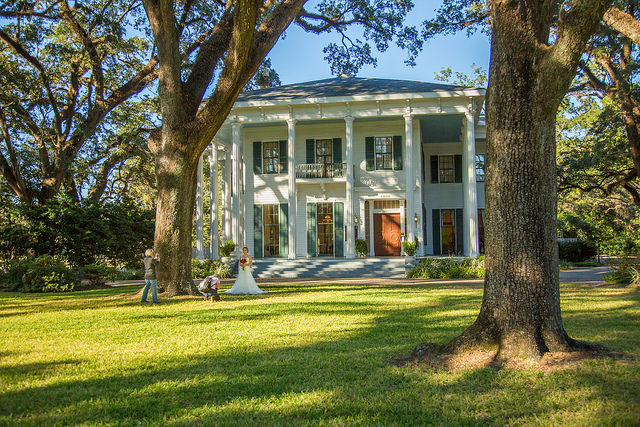There Is a Shrinking Number of Alabama Surviving Plantations
The fact that there are Alabama Surviving Plantations is now a real surprise given the dominance they had in the south in the 1800's.
However, the fact is that there are as many as are a bit surprising.
Before going into the 10 most predominant Alabama Surviving Plantations, it is very helpful to fully understand what they were and how they ran.
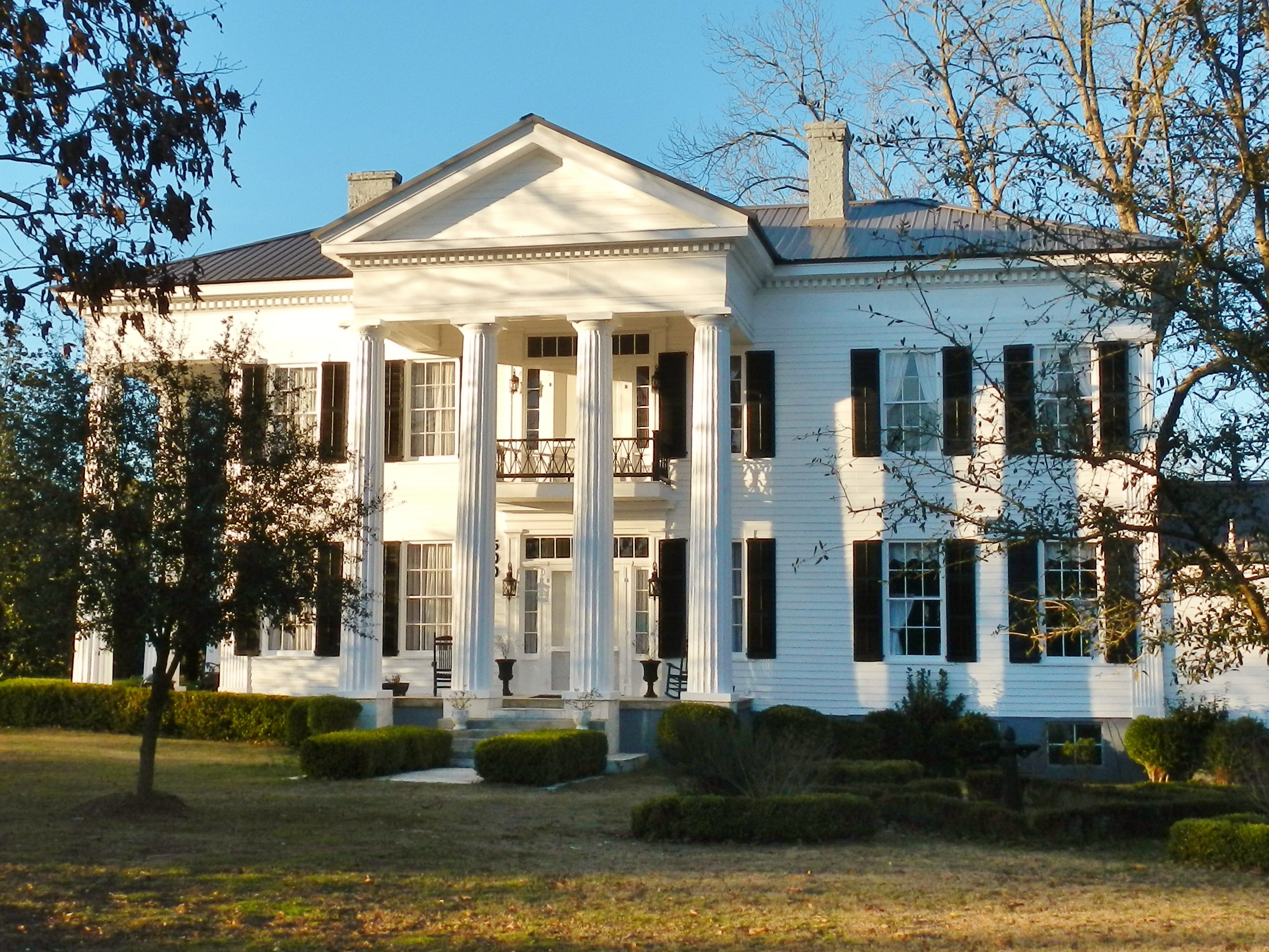 The Pillars Plantation Home in Lowdesboro Alabama
The Pillars Plantation Home in Lowdesboro AlabamaHow Alabama Surviving Plantations Used to Work
The Southern plantation was extremely predominant and an important part of history in the pre-civil war period.
The fact that they were so popular in the south had one very prominent common denominator, the weather.
The mild subtropical temperatures, a lot of year-round rainfall, and extremely fertile soil all added to the success of these very large "farms"
However, there is one other factor that made them extremely successful and thriving: the captive slave labor.
The success of these thriving businesses, other than the weather, centered around one major factor: the staff and the owner.
The way they were ran and who ran them often made the difference between success and failure, as this was the key to their overall success.
Just like any other business, it all starts with the boss or the owner, and in this case, in almost every instance it was an owner.
However, when dealing with Alabama Surviving Plantations, the owner was something more than just the owner of the property; he was also the planter.
The absolute true definition of a “planter” in the Deep South pre–Civil War era was defined as follows.
It was a person owning property, specifically real estate, as well as owning 20 or more slaves.
To be considered very rich, in the vast majority of cases, you would be growing a very expensive crop like tobacco.
If you did and you were successful, you would own a lot more land on your Plantation than normal, and you would own a lot more than 20 slaves.
However, in the very Deep South like Alabama which was considered to be the “Black Belt”, the term “planter” and “farmer” basically meant the same thing.
Next inline would be what was referred to as the “Overseer”.
 Old Meadow lawn Plantation
Old Meadow lawn PlantationThe “Overseer” was the direct representative of the Owner or Planter and would handle all the daily tasks.
In most all cases, for some unknown reason, this particular position was someone that was ill-educated and low-class, and despised the position and the rest of the staff.
The final member of the Plantation was the “Enslaved African” or totally free and cheap labor, other than room and board and food it took to keep them.
Again, in most all cases, because of the temperament of the “overseer”, they would discipline the slaves by beating, mutilating, or whipping them to work harder.
In severe cases, they would hang them to make a point, and if they did not act the way they wanted them to while hanging, they would let them die.
The 10 Alabama Surviving Plantations
Here is the list of the ten Alabama Surviving Plantations
- The Belle Mont Mansion
- The Pillars
- Kirkwood Plantation Home
- Grey Columns
- Black Thistle Plantation Home
- Oakleigh
- Kenan House
- Gaineswood Plantation Home
- Wakefield Plantation Home
- Youpon Plantation Home
Alabama has always been known to have some of the most beautiful Plantations in the south, and these 10 are prime examples.
It is important to note that the term “survive” means that they have been around close to 200 years by now.
The first of the Alabama Surviving Plantations is the Belle Mont Mansion built between 1828 and 1832.
It was built for Dr. Alexander W. Mitchell and is a pre-Civil War Jefferson-style plantation home that is located in Tuscumbia, Alabama.
Tuscumbia is basically a suburb of Muscle Shoals and is located in Northern Alabama.
Next on the list is the Pillars, which was built in 1857 by a by a cotton planter, Mr. Archibald Tyson. It is currently part of the Lowndesboro Historic District.
Lowndesboro is near Montgomery Alabama.
Next on the list is the Kirkwood Plantation Home, which is a Greek revival style plantation built in 1858 by Foster M Kirsey.
It is located in Eutaw Alabama which is located east of Selma.
Grey Columns, built in 1857 in Tuskegee is next, and now serves as the home of the President of Tuskegee University.
Black Thistle Plantation Home, built in 1937, is located in Pleasant Hill Alabama, and the home is still a private residence to this day.
Oakleigh sits on 35 acres in Mobile Alabama and was built by a dry goods merchant and cotton farmer.
Kenan House, located in historic Selma, was built in 1826 and is one of the oldest homes in Dallas County.
Number eight on the list of Alabama Surviving Plantations is the Gaineswood Plantation Home, built between 1843 and 1861.
It is located in Demopolis, and it is one of the few remaining Greek-Revival style structures in the entire country.
Wakefield Plantation Home was built by the Gulley family in the 1840's, and it is still a private residence.
It is located in the Furman Historic District of Alabama, is 6,000 square feet, and has 12 fireplaces.
Last on the list of the Alabama Surviving Plantations is Youpon Plantation Home built between the years 1840 and 1848. It is still a private residence and is located in Canton Bend, Alabama.
References
National Park Service (April 2007). "National Historic Landmarks Survey: List of National Historic Landmarks by State" (PDF). Archived from the original (PDF) on 2007-06-09. Retrieved 2007-05-20.
Related Pages
The Belle Mont Mansion, located in Tuscumbia in Colbert County, is one of the 10th Surviving Alabama Plantations.
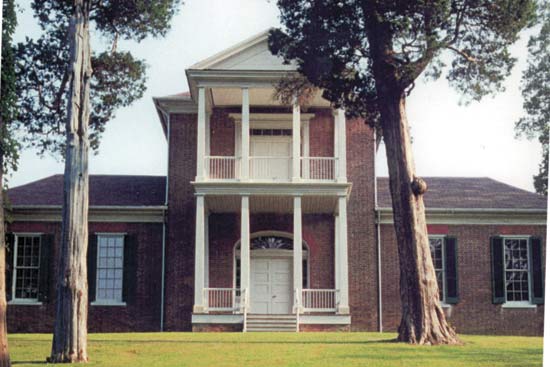 Front View of The Belle Mont Mansion
Front View of The Belle Mont MansionContinue Reading About Belle Mont Mansion
The Gainswood Plantation Home is a historic home that is located in Demopolis Alabama which is in Marengo County.
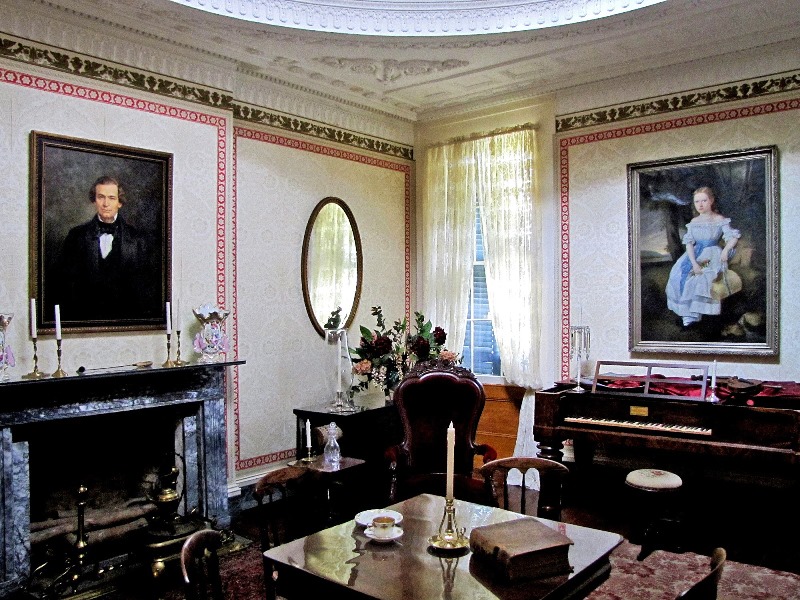 Room at the Gainswood Plantation Home
Room at the Gainswood Plantation HomeContinue Reading About Gainswood Plantation Home
The Kirkwood Plantation Home is a four-story Greek revival style that was built between 1857 and 1860.
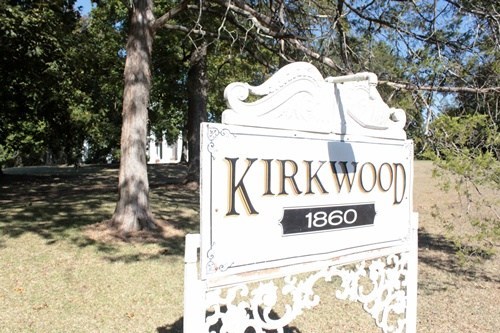 The Entrance to The Kirkwood Plantation Home
The Entrance to The Kirkwood Plantation HomeContinue Reading About The Kirkwood Plantation Home
The Youpon Plantation is an antebellum (pre-civil-War) home as well as a complex that is located near Canton Bend, Alabama.
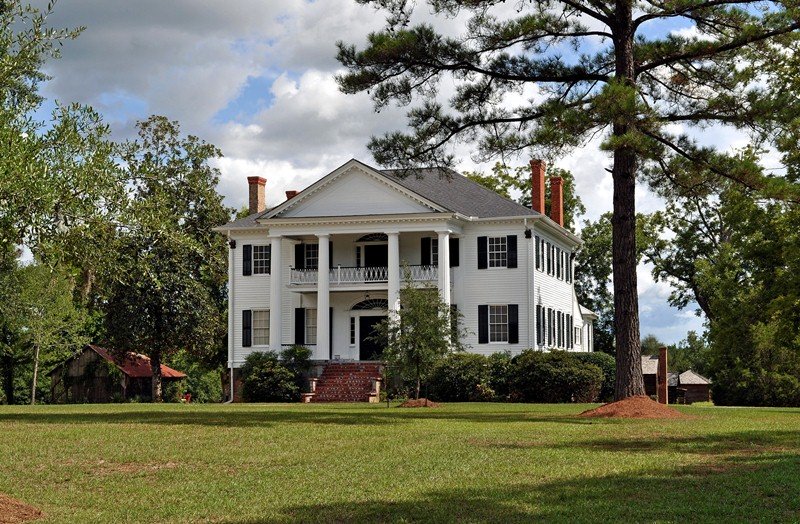 The Front View of the Youpon Plantation
The Front View of the Youpon PlantationContinue Reading About The Youpon Plantation

Alabama Gift Store
Numerous Items for You and Your Family to Enjoy
See it here at the Gift Store
Copyright 2019-2023 Alabamabackroads.com
All Rights Reserved
